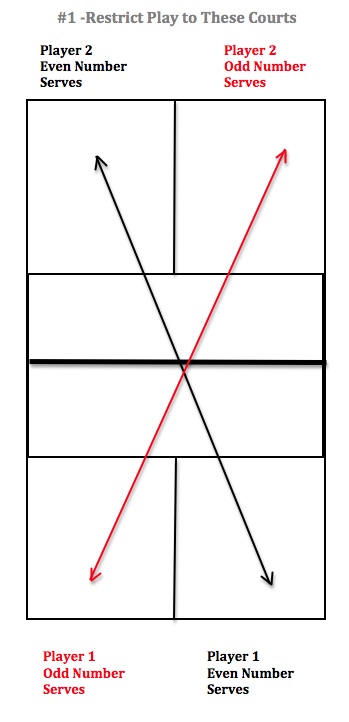In Malcolm Gladwell’s Book, “Outliers”, he asserts that to gain complete mastery of a skill one would need 10,000 hours of practice. He did this by examining the work of generally acknowledged geniuses or noted masters. There are those who will dispute the number Gladwell uses, but few argue with the idea that to gain mastery, one needs to practice.
The problem arises with the fact that practice may not be as much fun as using the skill for its intended purpose. A basketball player, for example, probably prefers to play a game rather than practice free throws to assure a ninety scoring percentage from the free throw line.
What if there were a compromise between practice and play? Now understand that I am not suggesting that this is better than just practicing. What I do propose is that perhaps this would help some players achieve a greater success in pickleball by focusing on ball placement during revised play.
An essential pickleball skill is to be able to “aim” the ball and what I mean by that is getting the ball where you want it to go. If you can’t hit the ball to your opponent’s backhand or down the middle, you will have trouble beating average to above average players. Learning to place the ball is a key pickleball skill.

Here is one way to practice placing the ball where you want it to go. Play a game with one other person (Yikes, not singles), BUT… the ball can only be hit to the side of the court the serving player serves from and the diagonal opposite court of the receiver. The game must be restricted to just those two diagonal courts. Anything on the other side of the court is a fault. Play this game to a score of fifteen when starting this revised play because faults will be much more prevalent at the start.
[ Looking at the graphic above then, play can only continue while the ball is hit to the courts indicated with the black arrow during even numbered points and only to the courts indicated by the red arrow on odd numbered points! ]
Once players have become better at this and the points are getting longer, the game can transition to opening play to any side of the court starting with the third shot. In this variation of play the server hits the ball diagonally, the receiving player must return to the server’s court and after that normal pickleball play resumes, i.e. hit the ball anywhere in the playing area.
Both of these revisions of play will force players to concentrate on getting the ball where it needs to go and thus practice placement. It isn’t practice per se, but it is one way to get experience with putting the ball where it needs to go.